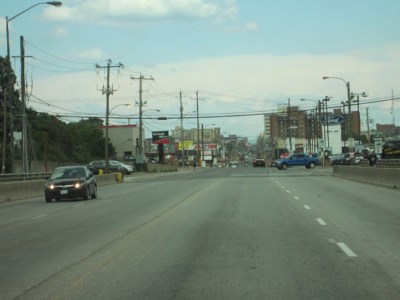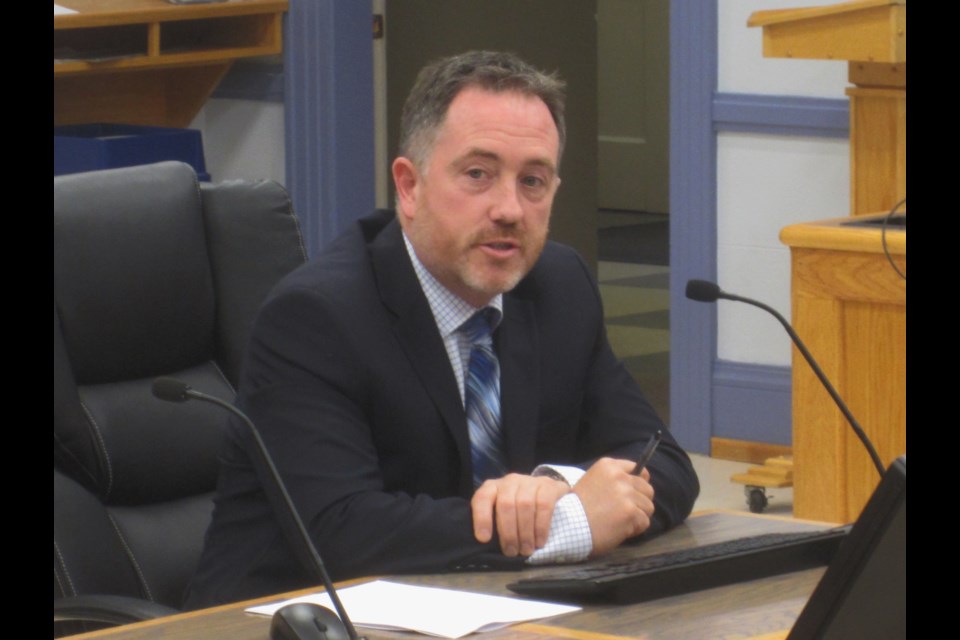When Timmins was shut out of Connecting Link funding for 2017, Mayor Steve Black called it 'disappointing to say the least'. It cast an ominous cloud over the city's 10-year plan, and now the city's new chief administrative officer is talking about an entirely new strategy.
At the latest budget meeting, CAO Dave Landers gave an update on the situation. As it stands, there is only $955,000 earmarked for work in 2017, or 'Phase 2'. However the entire length of 'Phase 1' wasn't completed in 2016, putting the city already behind on the project.
Landers proposed a 'risk-based approach' for moving forward with the Connecting Link, which focuses on the most critical sections, and urged council to think 'short term for long term'.
He proposed the city borrow $4 million for work on the project over the next 10 years, at an estimated 2.43 per cent interest. The $955,000 for 2017 would be divided into two pieces; $277,000 for shave-and-pave, and $678,000 would go into a reserve. Debenture payments would start next year at $455,000, according to Landers' report.
"We are concerned about government funding, and future government funding. Its hard to plan for money that we don't know is going to come. In speaking with our engineer and roads managers, they strongly advocate, and I support, a more of a risk-based approach to tackling this problem," Landers told TimminsToday.
"Thinking that municipally, or even with provincial funding, as its been coming sporadically, that we can cover the stretch of highway for the entire Connecting Link is perhaps a bit misguided."
Despite the city's official plan, which was designed in part to space out the annual work in different sections of the city to temper traffic and commercial inconvenience over the next decade, a new, practical reality may be setting in.
"I think that the 10-year plan looks good on paper, but in reality we need to take a different approach where we tackle those parts of the Connecting Link that pose the greatest risk to infrastructure. Areas with underground piping that is aged, some of it is 75 years old, and sewer systems that we can't have failing, and parts of the roadway that are considerably damaged," said Landers.
He said will be coming back to council soon with a new strategy and more specifics.
"To say, these are the different parts of the link that we think we need to focus our attention on. There's certain culverts that we've inherited from the provincial government that haven't stood the test of time. We're shoring them up, absolutely we're making sure that they're safe, but its a matter of time before we wait too long. Those parts of the road we want to tackle. We want to make sure that's fixed, that the underground infrastructure is in place, and that the paving will last many years," said Landers.
Phase 1 of the 10-year project, which was heavily boosted by a max out of provincial Connecting Link Funding, saw a stretch completed on Highway 101 East in between Schumacher and South Porcupine. It was original supposed to cover 2.2 kilometres, but was then shortened to 1.4 kilometres, and was the fuel for plenty of controversy in the council chambers.
The area chosen for 'Phase 1' has no water or sewer lines underneath it, which left some citizens questioning the decision.
"We started where we started because when the funding announcement happened, we had to be able to engineer the part of the road that we could get to. Because there was no underground infrastructure, it was the top level of ground, that allowed us to turn it around quicker as I understand it. Also, it is an important stretch of the highway, great volume and high speed. The road is showing its age. So it's not an unimportant stretch of the Connecting Link," said Landers.
Provincial Connecting Link funds can not be used for municipal water and sewer pipes, which leads to a more complex situation once the work gets into the city's core.
"Some of the work that we'd have to do on the infrastructure would have to come out of the Water Fund, so those are municipal dollars. But they have to go hand-in-hand to make sure that the plan works. Councillors brought up a good point that when parts of the road are closed, we're going to have to bypass. So we're going to have to do shave-and-pave and improvements in other parts of the community, to make sure that any diverted traffic is travelling on good solid road, and that the extra traffic through those perhaps less travelled areas doesn't just tear those apart as well," said Landers.
 Areas that have critically old pipes may be given highest priority under a new plan for the Connecting Link. Andrew Autio for TimminsToday
Areas that have critically old pipes may be given highest priority under a new plan for the Connecting Link. Andrew Autio for TimminsToday He said that the strategy needs to focus on critical areas and apply whatever dollars that are available in those sections.
"If there's parts of the highway where we don't need improvements to the sanitary system below, then we shouldn't be doing those improvements. Even though the plan said that it would happen. If that infrastructure is good for another 20 years, then let's stretch it out, and make sure that our dollars are earmarked for the most critical pieces."
Earlier this year, the city approved RFPs for future Connecting Link design and development.
"By next year, we should be well on our way to having a good sense of how we can make the best investments along the way, and how we can roll out builds unless, and until we get a long term plan from the government. We know we have the longest urban connecting link in Ontario. We have one of, if not the highest volumes of traffic on our connecting link as well, compared to everywhere else. That's not to say they don't have significant issues, everyone is having a hard time," said Landers.
"I've also heard, in my short time with the City, from the province that they understand that this is a long-term problem that we need to come together on. Until we can see sustained, long-term funding, year over year $3 million investments or whatever its going to take, we have to plan accordingly."
Multiple Councillors mentioned the idea of a cross-city shave-and-pave initiative, but Landers believes that doesn't make much sense.
"Shave-and-pave is important and critical to making roadways safe and passable. But we're not going to shave-and-pave an area that perhaps we're going to re-do the following year, or year after. So we want to be treating the disease and not the symptoms," he said.
Landers also mentioned the possibility that 'enhancements' such as bicycle lanes, also known as paved shoulders, which were included in 'Phase 1' might have to be scrapped.
"Council is really going to have to turn their minds to 'is this going to be necessary for us to do' to ensure that the Connecting link funding can be stretched for the full length, and that we're going to get our best return and make a good long-term investment."
The next section to be dealt with on the link is a 1.2 kilometre stretch on Highway 101 East, from near the Tisdale Cemetery to Rae Hill.
Council will vote on Landers' proposal on Monday night.
"The first plan was a good one, but we've got to come back at it with a different set of eyes, and that's what our team is doing right now," said Landers.




